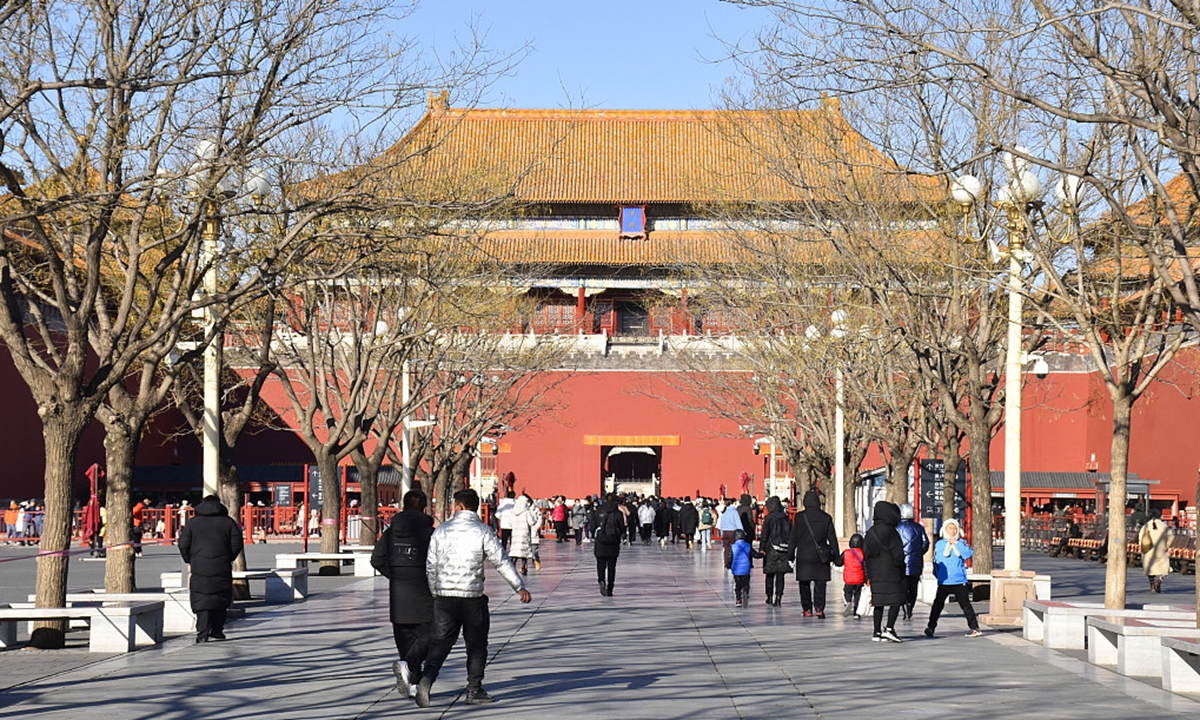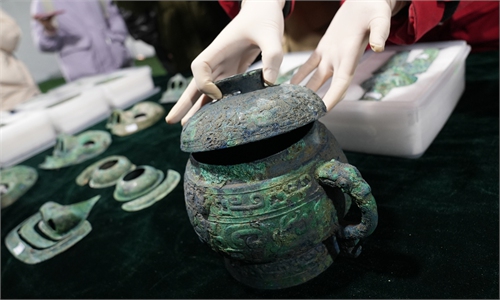ARTS / CULTURE & LEISURE
Beijing Central Axis keeps restoration works until 2025, seeking to become World Heritage Site

People visit the Palace Museum in Beijing on December 12, 2021. Photo: VCG
Beijing authorities announced on Sunday that the restoration works of buildings and premises around the Beijing Central Axis, including the Palace Museum, will continue until 2025 to ensure the location becomes a World Heritage Site.
The promotion of the Beijing Central Axis as a World Heritage Site has been one major task of Beijing's Dongcheng district government from 2021 to 2025. The authorities will strengthen the protection of historic buildings, urban water systems and traditional courtyard houses, news outlet The Paper reported.
The Beijing Central Axis is the core area of the old city that stretches 7.8 kilometers, from the Yongding Gate in the south, to the Bell Tower and Drum Tower in the north. It tells the story of the history of the emperors, from the Yuan Dynasty (1279-1368) to the Qing Dynasty (1644-1911), as well as popular figures and daily lives of the common people, a member of the committee in charge of organizing competitions about the Beijing Central Axis told the Global Times.
The Beijing Central Axis reflects Chinese traditional aesthetics that prefers symmetry and worships to order and etiquette in city planning. Therefore, it is a witness of Chinese people's lifestyle in ancient times and contains a view of Chinese traditional culture and values which are considered as main reasons to become a World Heritage Site.
In 2013, the Beijing Central Axis, which encompasses a total of 14 heritage sites, was included on UNESCO's Tentative List for World Cultural Heritage Site nominations.
The areas surrounding the Palace Museum are the major part of the Beijing Central Axis. Since March 2021, the application to return the use rights of houses around the Palace Museum has started with 41 courtyards. After residents returned the use rights, the authorities repaired these traditional courtyard houses called siheyuan and restored them to their original state.
The principle of the project is to respect the will and decision of residents and those who are willing to return the use rights can get a monetary compensation.
Besides the Palace Museum, traditional alleyways, or hutongs, surrounding the Bell Tower and Drum Tower are also key areas of the restoration project.
The authorities have renovated nearly 100 courtyards in Dongcheng district, taking down illegal buildings, cleaning the gardens and repairing the cultural relics in the sites.
Wang Pingjun, Director of the Urban Management Committee of the Dongcheng district, said that the district also plans to eliminate 50,000 square meters of illegal construction in 2022.
In the past five years, Beijing has accomplished the restoration of some key cultural relics and heritage sites on the Beijing Central Axis, including the Beijing Shejitian (Altar of Earth and Harvests) and Taimiao (Imperial Ancestral Temple).
Beijing has made great efforts to relocate a number of companies and residents that have improperly lived in cultural heritage buildings for a long time. The city also launched a number of cultural relic protection and restoration projects to gradually improve the heritage of the Beijing Central Axis and expand public cultural venues.

